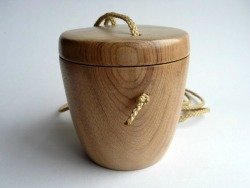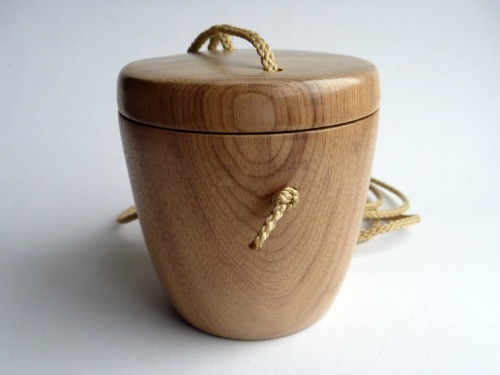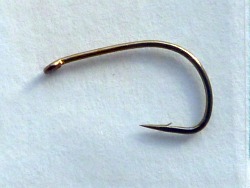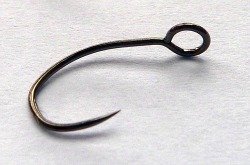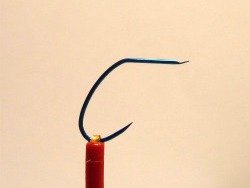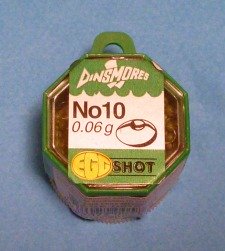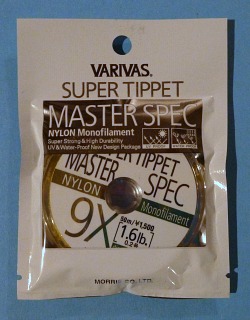Confessions of a
Red Wiggler Fisherman
by Les Albjerg
Why Red Wigglers? It is simple, they catch fish! I have used them for fishing for Panfish, Trout, and both Smallmouth and Largemouth Bass.
Early in my fixed line journey I decided that I was going to learn how to fish with Red Wigglers. I have been fishing them for almost a year now. I enjoyed fishing with worms when I was a youngster, and my Dad often turned to Night Crawlers for fishing for Walleyes in Minnesota when nothing else worked. I am not an exclusive worm fisherman. I do still enjoy catching fish on flies. In my experience so far, I am catching more fish with the Wigglers than my fishing buddies do with flies. On a typical day, I outfish them at least two to one, and most often about four to one.
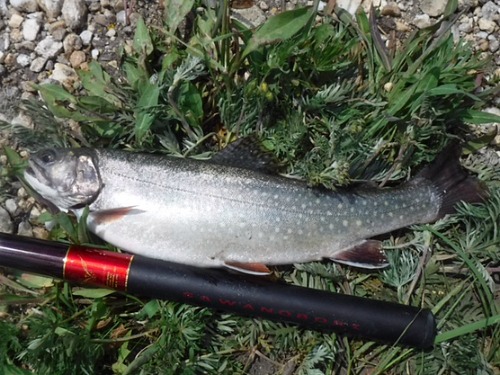
How to Grow Red Wigglers
So, where do you get Red Wigglers? You have three choices. You might be able to buy them at a bait shop (although most bait shops sell "large red worms" instead of Red Wigglers, and they are not the same). Possibly you can find a gardener who composts with them. If you want a reliable supply, having your own worm ranch is the way to go.
A worm ranch is easy to maintain. Most of the YouTube videos dealing with raising Red Wigglers are geared to raising them for compost. For fishing here is my simplified method. I began with 500 worms (bought off the internet from a commercial grower), a 12 x 16 x 6 inch plastic storage bin with several 1/8 inch holes drilled in the bottom for drainage. The top that came with the bin is not used as a lid, but instead is used for the base. The lip around the lid will catch any liquid that leaks out the drainage holes. Instead of the plastic lid, I put a piece of burlap on top to retain moisture and provide darkness.
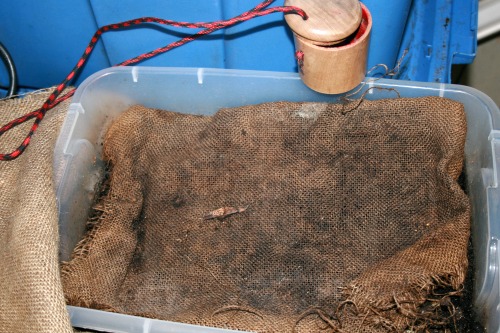
I have gone to a simplified bedding and feeding program. I am raising wigglers for fishing. I use Peat Moss for my bedding. It can be found at most garden stores or garden departments in the big box stores. I also use ground oyster shells in my bedding (4 tablespoons). The little guys need some grit for processing their food. An alternative is to enjoy some eggs with breakfast, and use ground up egg shells. Make sure that you microwave the shells for about 90 seconds before grinding them up and feeding them to your worms. You want the shells to be sterile.
I have found that the bedding lasts for 3-4 months. What you are left with is referred to as "Black Gold." I used the compost on my tomatoes and peppers this year, and had a great crop. If you don't garden, find a friend who does and they will love getting your "Black Gold."
The bedding needs to be moist but not soaking wet. I add water about twice a week in the summer and once a week the rest of the year. My simplified food consists of coffee grounds and corn meal. I feed 3 - 4 tablespoons of cornmeal a month and the coffee grounds from my morning coffee 2-3 times a week. I tried shredded paper, but that proved to be messy. I'll give the Wigglers treats of vegetable scraps once in a while. The only warning I have found is to avoid citrus.
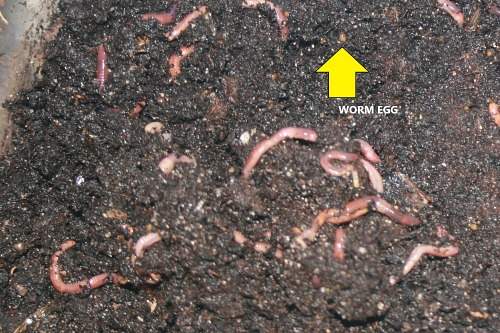
The total time spent caring for the worms is at the most 15 minutes a week. They are pretty low maintenance. I have used well over 1,500 red wigglers this year. I am sure I have close to a 1,000 ready to go in the Ranch. How can that be? The little guys really multiply! They are self regulating too. So as you deplete supply, they lay more eggs. There are 4-15 worms in each egg capsule.
Fishing with my son for Panfish, we went through 180 worms in one
afternoon. I normally go through a dozen to two dozen worms during a
fishing session. I am saving money having a little Worm Ranch. You can
have your own Ranch in a small bucket as well. What I really like is
the 100% availability and total convenience. When I go fishing, I just
go out and put some of the bedding from the edge of the Farm in my
wooden bait box, pick out two dozen nice wigglers and go fishing.
Why aren't Red Wiggler Worms more popular for fishing? They have a bad reputation of being hard to keep on the hook. Howard's Tackle Shoppe near me sells all kinds of bait. They have night crawlers, meal worms, crickets, etc. I asked if they wanted to buy some of my Red Wigglers. Their answer was, "No they are too hard to sell. People don't like them because they are too fragile." Yes, they are more fragile than a night crawler, but they catch more fish too. So here is what I have learned so far to keep the Red Wiggler on the hook. I will be talking about hooks and then about hooking techniques.
How to Hook Red Wigglers
I have done a lot of experimenting on how to put the worm on the
hook. I have
experimented with at least 3 dozen different types of hooks. I have found 4
that work well. Three of them are sold on this website.
Unless you want to be frustrated, do not use regular size hooks. Stay away from standard diameter hooks. You want to use a thin diameter hook. When my Dad died, I inherited 12 large boxes of tackle. I have enough hooks to open my own tackle store. So, I didn't go out and buy this variety, I had them in house. He was a dedicated bait fisherman. None of his standard hooks worked very well, even the ones labeled as "worm hooks." The Owner Main Stream Tenkara Hook sold by Chris works well with Red Wigglers if you want a barbed hook. I use this hook with a bead head for "Czech "nymph" wiggler fishing.
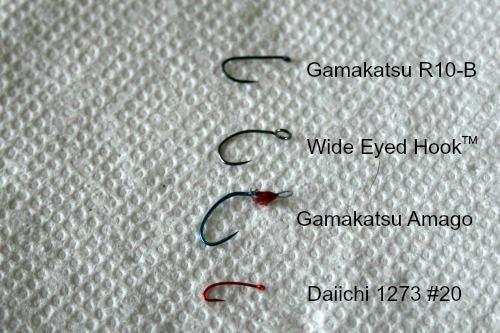
True barbless hooks are the best hooks for fishing Red Wigglers. I heard that barbs were originally added to hooks to help hold the bait on the hook. In my experience with the Wigglers, barbs tend to damage the skin of the worm, making them weak, and you end up losing your worm. A sharp, thin wire barbless hook gives a very secure hookup. The best hook I have found to date is the Gamakatsu R10B, size 14. The strange looking bend in the hook keeps the worm on the hook. This is my number one Red Wiggler hook.
The second hook that I really like is the "Wide-Eyed" hook. This is a barbless hook that has a slight circle hook design to it as well. The Red Wigglers stay on these hooks well too. I have found a higher percentage of hookups with this hook. My goal is to lip hook all of my fish. The design of this hook really facilitates a good lip hook.
The other hook that I have found works particularly well in faster water is the Gamakatsu "Amago" hook. This is an eyeless hook, so you either have to tie an eye on the hook or snell the hook. All of the Keiryu hooks I have tried from Chris work on the Wigglers, these are the stand outs.
The last hook that I use is
the Daiichi 1273 in size 20. I found that the size 22 is too small.
This hook works well when you have to drop down to 8 or 9x tippet for
ultra clear spring creek water and the fish are very shy and picky.
To
be honest with you all, I almost gave up on Red Wigglers after my first
fishing session with them. I lost 6 worms for every one I kept on the
hook for two or three casts. Fast forward to yesterday. I fished for
22 minutes, made 46 casts and 22 mends before losing my wiggler. (And
yes I did keep track because I knew I was going to be writing this
article.) So, "What changed?" you may ask. The biggest lesson I
learned is a Red Wiggler isn't a small night crawler. They are more
sensitive. Maybe I am just all thumbs, but I found the old technique of
poking the nose and threading the worm on doesn't work.
Red
Wigglers are worms. You need to get to know your worm. So here is a
little worm anatomy. You can divide your Wiggler into three basic
sections. You have the mouth and digestive system at the front of the
worm. In the middle is the "Clitellum." The Clitellum is the raised
band that you see on your worm. The tail is called the "segments." This
is all muscle, with a tube running the length ending in the vent.
I don't hook the wigglers in the digestive area. There are two reasons not to hook them in the digestive area, (1) It kills the worm quicker, and (2) the worm can wiggle off the hook easier. In my opinion, you should never hook your worm in the clitellum! This is where the sex organs are located. Would you want a hook in your privates! So, the best place to hook your worm is in the tail area (behind the clitellum).
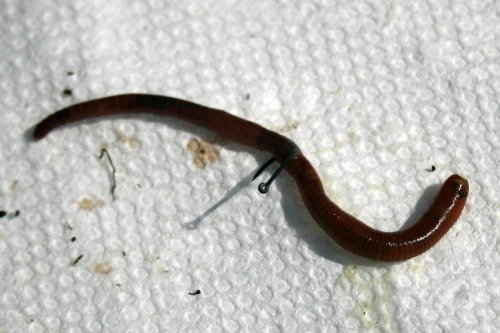
So, how do keep a Red Wiggler on the hook? After trying more different
hooking methods than I remember, I have come up with two that work
really well. So here it is. It is so simple. Look at your Red Wiggler
in your hand. Let it settle down. Find the clitellum, and run the hook
straight through the middle of the worm, crossways, about 1/8" to 3/16"
behind the clitellum. That is it! It is so simple!
This is like hooking the worm in the small of its back. It has a very difficult time wiggling off the hook. The hook is going through the toughest muscle of the worm as well. Do you want to weaken your setup? Hook the worm again in the tail. You might think you are getting a better hook up but you are giving the advantage to the Red Wiggler. Once through the worm and he has no leverage to get off the hook. When you hook it more than once, you are giving the worm leverage to get off the hook! You are also weakening the muscles in the tail.
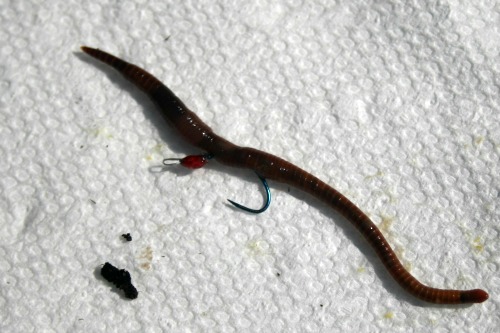
If you use the Gamakatsu Amago hook, find the same spot just behind the clitellum, and with the hook pointing toward the back end of the worm, run the hook the length of the point and then bring it back out. Carefully work the worm up to the middle of the hook. This is the hook I like to use when I am fishing worms in the riffles. Some may object to how the wigglers looks on the hook after a few casts. It dangles from the middle. Don't be deceived, this isn't how it looks in the water. In the water the wiggler is free to move with the currents. Most of the time a fish will strike the bait in the middle. The hook is almost in the middle, so most of the time the strike is fairly dramatic!
How to Fish Red Wigglers
My favorite way to fish Red Wigglers is the "ultra light worm fishing" method
that Chris wrote about. You need to read that article. In streams, I
have used wigglers using the standard Keiryu techniques with split shot
and yarn markers. I have caught most of my smallmouth bass using this
method. Last winter, I often fished with a beadhead tied to a Gamakatsu
R10B, size 14. Basic Czech nymphing techniques work well.
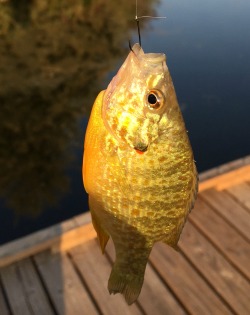
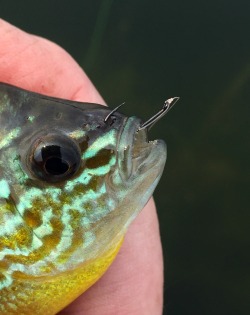
In late summer I fish ponds for panfish. With my Keiryu rods, I have been using the Wigglers with no weight and letting them drift down between the weed beds. Sometimes you get the thrill of seeing the fish dart out from the weeds and nail the worm! This spring, I used the countdown technique and a slow retrieve for Crappies. Most often I fish Red Wigglers the same way I would fish a wet fly. The only thing I do different is never false cast!
I have one secret weapon. I would highly recommend having a supply of Dinsmore's #10 split shot. These are awesome for getting the worm down when needed. Unlike standard sizes of split shot, this size works for the fine tuning that you might need to get into the fish. I have often worked a worm up through a seam in the current and had a fish slam it as I was moving it upstream. For some reason fish realize that a Red Wiggler is food, and they go for them! Give them a try, they are a lot of fun!
TenkaraBum Home > Confessions of a Red Wiggler Fisherman
“The bitterness of poor quality remains long after the sweetness of low price is forgotten” - Benjamin Franklin
"Be sure in casting, that your fly fall first into the water, for if the line fall first, it scares or frightens the fish..." -
Col. Robert Venables 1662
As age slows my pace, I will become more like the heron.
Warning:
The hooks are sharp.
The coffee's hot.
The fish are slippery when wet.
Beware of the Dogma
Currently processing orders that were received Mar 8.
This Just In
Related Items
Facebook Groups
There are two Facebook groups that provide a lot of good information about composting with red wigglers. Their focus is clearly composting rather than raising worms for fishing, but if you have a garden you may as well use the worm castings as in addition to the worms.
There is also a relatively new Facebook group on raising worms for bait.
It is a private group, but you can request membership.
